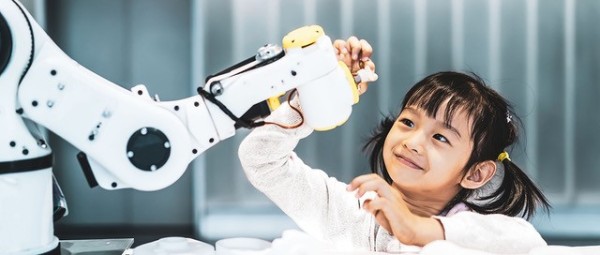The evolution of robots is rapidly upon us as they are learning faster and faster: to move around and enhance their vision, tactile sensitivity, and smell. These machines are becoming more powerful and robust liberating their human colleagues from hard and hazardous work.
Robots have been used for 60 years. George Devol had the first teachable robot patented in 1954, which laid the foundation for modern robotics. In the following years, the evolution of industrial robots kept progressing with electric motors replacing hydraulic control units and sensors, enabling the performance of more sensitive work or robots autonomously moving around on the factory floor.
Today manufacturing operations are inconceivable without robots. In 2021 more than three million industrial robots were in use worldwide, joined each year by 400,000 new ones, according to the international federation of robotics (IFR).
Robots are becoming increasingly flexible, fast, precise, and efficient. The technological developments make solutions possible today that just a few years ago were not feasible.
However, implementation costs have proved to impede their widespread use significantly. Unsurprisingly small and medium size companies don't embrace the prospect of incurring implementation costs amounting to two or three times the robot's prices.

Schaeffler is among the companies pursuing an intriguing approach to lowering that hurdle by emphasising a simplified installation start-up operation. They implement sensors in their gearboxes to assist in the required data acquisition. That helps to simplify programming within the compact collaborative robots (cobots) as they use the so-called teach-in function to learn movements by rehearsing processes guided by hand.

Besides simplified implementation and operation, other factors are conducive to accelerating the widespread use of robots. Even sectors in which robots have so far failed to get an "arm in the door ". They are now investigating automation out of sheer necessity. This includes companies that, due to small volume or complex processes, have so far had to rely on manual work.
Senior Vice President Industrial of Automation Ralf Moseberg confirms this by stating, "At Schaeffler, we're also seeing a massive increase in demand for robots as well as for cobots in non – industrial sectors such as healthcare, food and logistics,"
In parallel with the advancement of cobots, the evolution of the classic industrial robot, which already has a payload of several tons and a range of up to five meters (16 feet) today, continues. Moseberg states "Higher precision, a smaller footprint, higher efficiency and longer maintenance intervals are the areas here that we're working on as well".
Furthermore, Schaeffler offers precision planetary gear units of the PSC series for industrial robots. Compared to the market standard, it's characterised by ten times lower torsional backlash and three times the longer service life. In addition, the precision planetary gear units feature wear compensation that keeps the units' extremely low torsional backlash at constant levels.
Such major development leaps are rare. Robotics as a whole for Schaeffler, including large industrial robots, is a field with potential growth that will only become more paramount to building the world of tomorrow.

